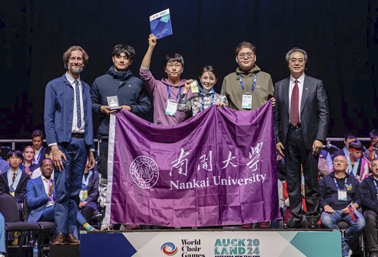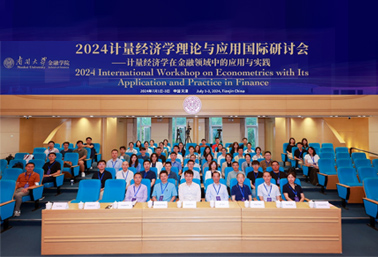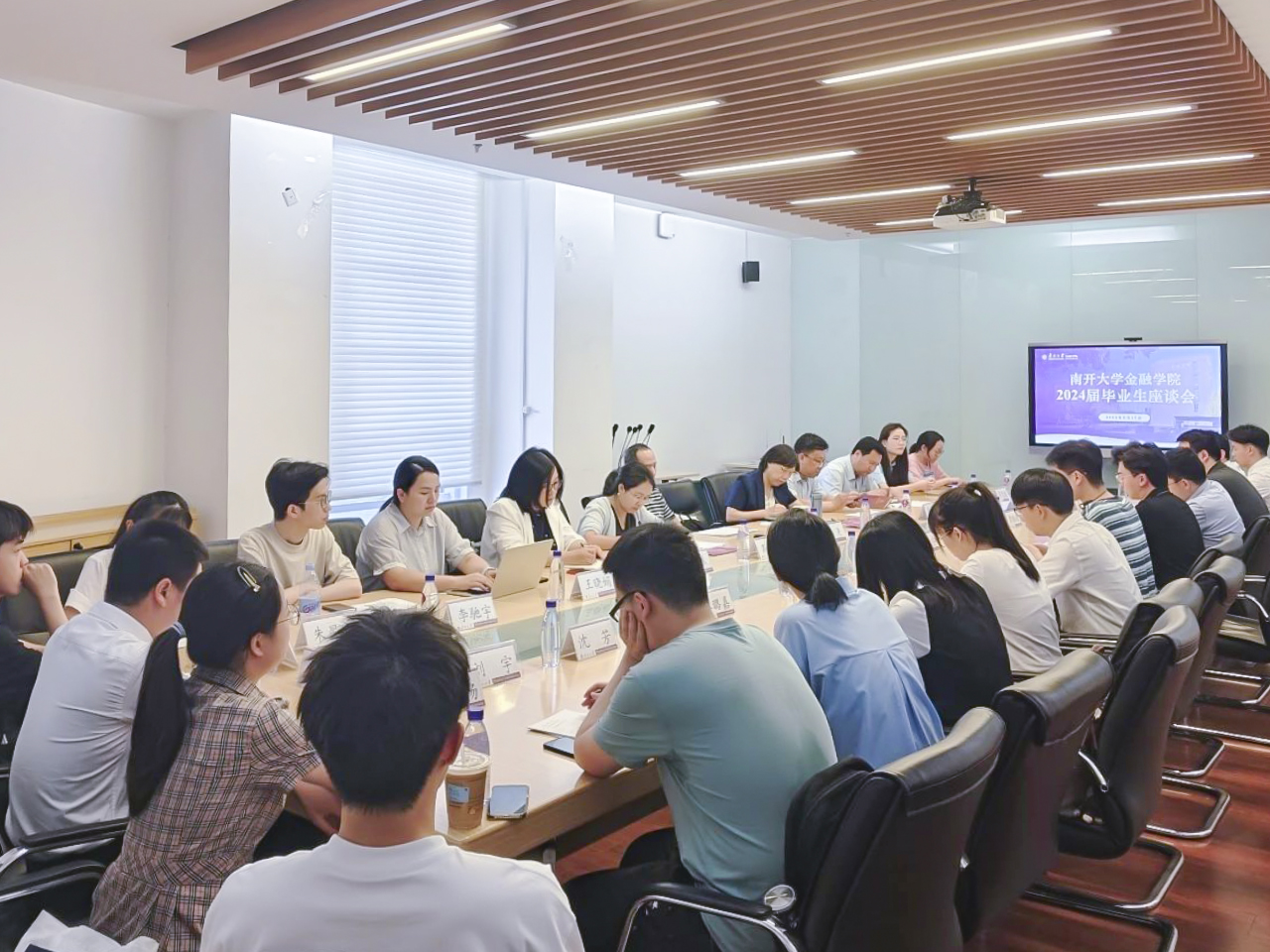Noon Sunshine - Young Scholars Seminar is an academic exchange activity of School of Finance since it is established. Noon sunshine means that the growth of trees needs the nourishment and illumination of sunshine, and the growth of young scholars also needs academic nurturing and experience.
Noon Sunshine in the autumn semester of 2021 starts as scheduled. The main participants of this semester activities are the new young scholars in 2021. We are looking forward to the new voices!
(The specific time and place will be informed in detail again before the event.)
The lectures are as follows:
1、The Consensus Bargaining Solution
Xiangliang Li is an Assistant Professor from the School of Finance at Nankai University. He graduated from Yale University. His research fields include (cooperative and noncooperative) game theory, mechanism design, and international trade.

We propose a new solution to the two-player bargaining problem of Nash (1950): The Consensus solution. It maximizes the total amount of options that both players agree are worse than the solution but better than no-cooperation. It can be characterized by a simple equality. It satisfies all the axioms of the Nash solution except Axiom IIA (Independence of Irrelevant Alternatives); the Nash solution satisfies all its axioms except one which says: when both players' utilities of no-cooperation become lower creating additional room for players to cooperate, then as long as options within the additional room are worse than the current solution, the solution shall not change.
2、Wealth Creation by Public Firms
Yu Shi is an Assistant Professor of Finance in Nankai University. She obtained her PhD in Management from University of California, Los Angeles. Her research interests include macro finance, financial intermediation and financial econmics.

We study the joint dynamic between entrepreneurs’ ownership and their firms’ outcomes, and the consequences for wealth inequality. In the last few decades, despite of the fact that firms’ ownership concentration has been going down, wealth inequality level is going up. To understand this puzzle, we decompose entrepreneur’s wealth creation into creation through firm growth and creation through wealth transfer from public investors. Liquidating shares faster, which will result in lower ownership concentration, enables entrepreneurs to create wealth mainly through public transfer. Empirically, 75% of the entrepreneurs are making negative wealth through firm growth.
3、A Corporate Finance Model with Customer Dynamics: The Leverage-Profitability Puzzle
Xiaolin Zhang is an assistant professor from the School of Finance at Nankai University. She received her PhD in finance from Boston College. Her research mainly focuses on the interaction of capital and product markets.

The negative empirical relation between leverage and profitability has been identified as the key evidence inconsistent with the trade-off theory of capital structure. The paper proposes a novel mechanism that reconciles the leverage-profitability puzzle with the trade-off theory. The model assumes that firms make pricing and quantity decisions that take into account their short term impact on profitability and their long term impact on customer base and market share. These decisions impact debt choices because a firm with better long term prospects can accumulate more debt. Simulation results from a calibrated version of the model are consistent with regressions of leverage on profitability. The model offers other predictions that I also bring to the data.
4、News-Implied Linkages and Local Dependency in the Equity Market
Shuyi Ge is an Assistant Professor of Finance in Nankai University. She obtained her P.h.D from the University of Cambridge in 2021. Her research interests include financial econometrics, empirical asset pricing, machine learning, and networks.

This paper studies a heterogeneous coefficient spatial factor model that separately addresses both common factor risks (strong cross-sectional dependence) and local dependency (weak cross-sectional dependence) in the equity returns. From the asset pricing perspective, we derive the theoretical implications of no asymptotic arbitrage for the heterogeneous spatial factor model. In empirical work, it is challenging to measure granular firm-to-firm connectivity for a high-dimensional panel of equity returns. We use extensive business news to construct firms’ links via which local shocks transmit, and we use those news-implied linkages as a proxy for the connectivity among firms. Empirically, we document a considerable degree of local dependency among S&P 500 stocks, and the spatial component does a great job in capturing the remaining correlations in the de-factored returns. We find that adding spatial interactions to factor models reduces mispricing and mean-squared errors. We also show that our news-implied linkages provide a comprehensive and integrated proxy for firm-to-firm connectivity, and it out-performs other existing networks in the literature.
5、 Do Investors Care About Tail Risk? Evidence from Mutual Fund Flows
Wenting Dai is an Assistant Professor from the School of Finance at Nankai University. He graduated from Texas A&M University in 2021. His research interests include empirical asset pricing, mutual funds, hedge funds, and sustainable finance.

This paper examines investor attitude toward tail risk based on mutual fund flows. We show that fund flows are significantly sensitive to tail risk in the cross-section, even after controlling for fund performance and characteristics. Using terrorist attacks and COVID-19 as exogenous shocks to the investor fear level, we find that fund flows become increasingly sensitive to tail risk following the shocks, suggesting that fear is a driving force of the tail risk aversion. In particular, the flow-tail risk sensitivity during the onset of COVID-19 is about 5-9 times as large as that in other periods. In addition, tail risk is associated with the activeness of mutual fund investment strategies. The results are robust to alternative measures of tail risk. Overall, our findings suggest that investors care about tail risk beyond traditional risks.
6、First Foot Forward: A Two-Step Econometric Method for Estimating the Impacts of Multiple Identities
Bo Wang is an Assistant Professor of Finance in Nankai University. He graduated from Ohio State. His research interests include education economics, high-skilled workforce, interdisciplinarity, health economics, health policy in China.

Marketing and strategy researchers have often studied how firms navigate multiple identities but less attention has been paid to understanding how individuals do so. As a model domain to examine this question, we focus on interdisciplinary dissertators in the United States since there are clear uptrends in dissertators engaging multiple identities and unclear trends in their outcomes. We introduce a novel two-step econometric approach to characterize salaries of interdisciplinary dissertators as functions of the identities (academic fields) they acquire as graduate students. Our estimates robustly reject the hypothesis that interdisciplinarians receive a wage premium. We also find evidence that the market compensates researchers based on their primary discipline, an outcome that challenges emphases on interdisciplinarity. While our findings for interdisciplinarians point to the primary identity holding predominant importance for doctoral graduates in the United States, our two-step method provides a framework for studying the varied impacts of multiple identities across contexts.
7、Do Mutual Funds Walk the Talk? A Textual Analysis of Risk Disclosure by Mutual Funds
Nan Xu is an Assistant Professor of Finance in Nankai University. She graduated from University of California, Irvine. Her research interests include mutual funds, institutional investors, empirical asset pricing, textual analysis and behavioral finance etc.

Do risk disclosures by mutual funds reflect funds’ actual investment risks? Using textual analysis, we examine risk disclosures in funds’ summary prospectuses to determine whether funds do accurately disclose their risks. We first document the types of risks disclosed by funds and study the relation between fund-disclosed risks and risk factors documented in academic studies. We find that most disclosed risks can be linked to meaningful and well-known academic risk factors. In our main tests, we develop fund-level measures to evaluate the informativeness of funds’ risk disclosure, including risk coverage, conciseness, and uniqueness. Our findings suggest that disclosed risks in general reflect a large proportion of funds’ investment risks but with substantial cross-fund heterogeneity. Interestingly, we find that funds tend to overdisclose risks; half of the disclosed risks are not significant in explaining the variations in fund returns. Further tests show that less skilled funds and riskier funds tend to disclose more. However, new money flows are not related to risk coverage. Overall, this paper provides novel evidence on the informativeness of risk disclosure in summary prospectus.
8、Daily Mutual Fund Performance
Haitao Huang is an Assistant Professor in the School of Finance at Nankai University. He obtained his PhD in Business Administration (with concentration in Risk Management and Insurance) from Robinson College of Business, Georgia State University in 2021. His research interests include financial econometrics, asset pricing and mutual funds. He has published in the Journal of Financial Econometrics and the Journal of Applied Econometrics.

Many empirical finance studies use monthly returns to assess fund performance, which are typically challenged by a large cross-section with short time series. This paper proposes an econometric framework for using daily return data to select skilled funds. To account for the empirical features of daily fund returns, including serial correlation and heteroskedasticity, fund residuals are modeled by a very general class of ARMA-GARCH processes. To accommodate dependent risk factors and residuals, and heavy-tailed returns, a large-dimensional alpha test is proposed based on random weighting and weighted least squares. An adaptive version of the alpha test is applied to construct fund portfolios. Empirically, skilled funds found by our test enjoy higher alphas and Sharpe ratios. Consistent with the declining trend of the actively-managed mutual fund industry, skilled funds are shrinking in numbers with deteriorating daily performance. Skilled funds on average have persistent performance at the quarterly horizon, but a substantial proportion of them appears to have superior performance purely by chance. The performance persistence disappears at longer horizons.
9、Peer effect in pension expectation attitude
Youji Lyu is a lecturer in the School of Finance at Nankai University. He obtained his PhD in Applied Economics (with concentration in Risk Management and Insurance) from School of Economics of Peking University in 2021. His research interests include social security and behavior economics. He has published in the Journal of Pension Economics & Finance, the Journal of Financial Research (in Chinese).

Based on a nationally representative dataset from the China Health and Retirement Longitudinal Study (CHARLS) during the period 2011–2018, along with the instrumental variable approach to address the possible endogeneity, this research quantifies the peer effect in the context of pension expectations. This paper documents that individuals’ attitude towards expected pension benefit is significantly influenced by the peer group in the community. Moreover, this paper provides empirical evidence about the asymmetric peer effects: the male, the elderly, the high-education group, and those experiencing failed Old Rural Residents’ Pension program were easier to be influenced by the behavior of the peer group; the male and those experiencing failed Old Rural Residents’ Pension program were more influential and act like the herd in the peer group. This paper also explores the channels through which the peer effect operates. We find that the knowledge spillover channel dominates the social norms channel: the peer effect operates through transmitting information about the public pension system. Lastly, we find that the pension expectations of early participants have long-lasting effects on the pension expectations of future participants, i.e., snowball effect.








